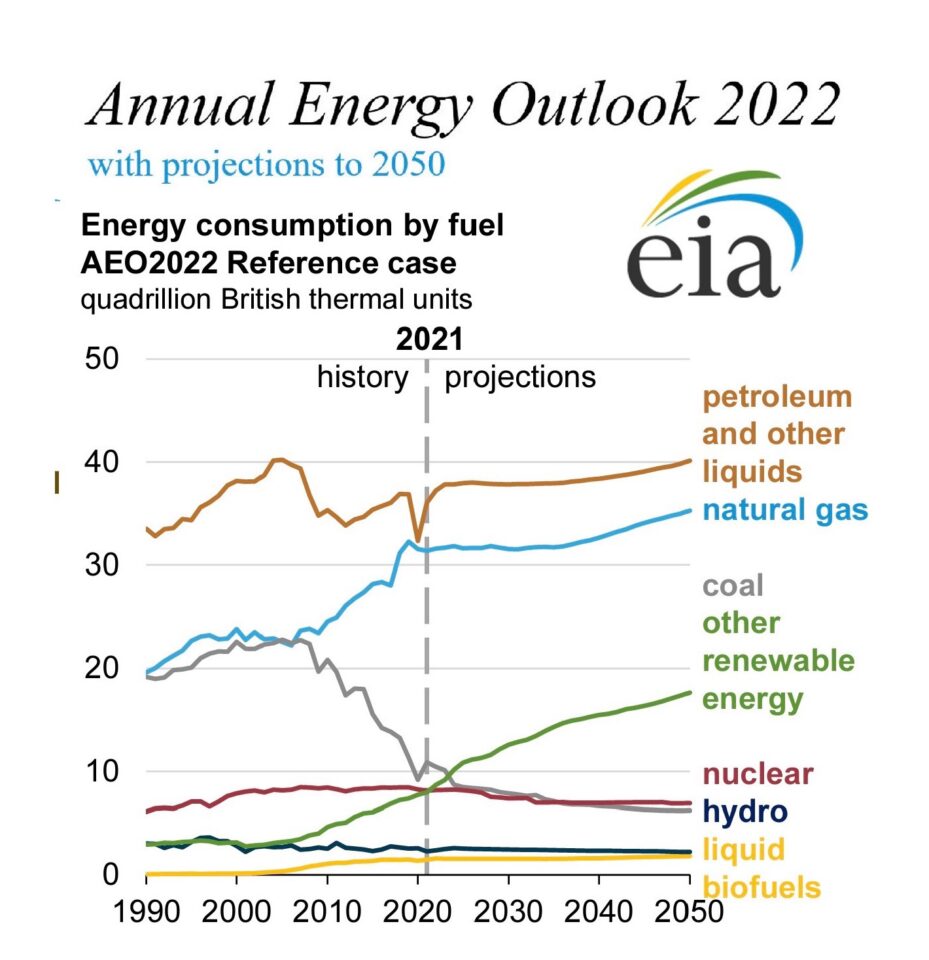Energy Security Only Possible With an All-of-the-Above Approach
One of the more ludicrous claims to gain traction since Russia’s invasion of Ukraine fast-forwarded an already inevitable energy crisis is that simply going “green” can secure our energy independence. This is an ironically-flawed notion that ignores some inconvenient truths our European allies know all too well.
Though we obviously don’t rely on foreign nations for sunlight and wind, we are almost completely reliant on other countries (mostly China) for the immense quantities of minerals and materials needed to build the wind turbines, solar panels and batteries used to collect “green” energy. This is primarily because the same “Keep It In the Ground” groups that insist we go 100 percent “green” have proven very effective at stopping the domestic mining needed to access these raw inputs here in the United States. Add in the fact renewable energy can only generate electricity – weather-dependent and unreliable electricity at that – and it’s clear wind and solar replace oil and thousands of petroleum-based products about as well as hats replace shoes.
It is with these facts in mind that the Department of Energy has repeatedly forecast we’ll need more oil and natural gas 30 years from now than we’re using today.

That said, the only realistic path toward energy and economic security is an all-of-the-above approach that focuses on producing as much of all forms of energy in the United States as possible.
Fortunately, we are in a much better position to truly embrace an all-of-the-above approach than our friends in Europe. Europe has spent the past 20 years shunning development of its hydrocarbon resources and attempting to go “green.”
So how’s it going?
Because of its obsession with going “green,” a vast majority of European countries banned hydraulic fracturing (aka “fracking), the most effective technology available to maximize oil and gas production. “Fracking” has single-handedly transformed the United States into a net petroleum exporter over the past 15 years and it is now used to complete 95 percent of new oil and gas wells in the U.S. At the same time, European oil and gas development has declined rapidly while renewable energy has proven woefully inadequate for meeting Europe’s energy demand. As a result, the continent has relied on Russia for 40 percent of the natural gas and 25 percent of the oil it consumes.
After bankrolling Vladimir Putin’s atrocities in Ukraine to the tune of $450 million per day in Russian oil imports as it dilly-dallied for months on a decision to ban Russian petroleum, Europe is now scrambling to find a replacement for the oil it desperately needs. Its leaders’ proposed solution: more renewables. As one industry insider recently tweeted, Europe has painted itself in a corner and is contemplating using more paint.
We must learn from Europe’s mistakes and avoid their unrealistic “green” energy fantasies that have turned into an energy nightmare. There are no shortage of red flags on the misguided path to relying on foreign nations for alternative energy.
Stellantis CEO Carlos Tavares recently warned that the electric vehicle (EV) industry is facing a “Darwinian period” due to difficulty in acquiring essential mineral inputs for massive EV batteries. Environmental groups also recently successfully lobbied the Biden administration to give China a two-year pass on solar component tariffs. Why? Because they know U.S. manufacturers don’t have the supply chains needed to fill a void that a sudden halt in Chinese imports would create.
President Bien has invoked the Defense Production Act in an effort to increase the domestic supply of minerals. But his own Department of the Interior recently killed a major nickel and copper mine in Minnesota after being pressured by environmental groups. In a comment widely trumpeted by “green” groups for years, Earthjustice senior legislative representative Blaine Miller-McFeeley said, “We do not need more dirty mining to achieve the clean energy transition.”
But in reality, all forms of energy and modern products originate from the ground and we will need more mining, drilling and other forms of energy development to meet our ever-growing needs. That is why an all-of-the-above energy approach focused on domestically-produced oil, natural gas and alternative energy is the only realistic way of ensuring our energy security and any hopes of energy independence. Simply going “green” won’t cut it.
